Ice fishing is a beloved winter pastime that combines the thrill of angling with the beauty and tranquility of frozen lakes and rivers.
However, before embarking on this chilly adventure, it’s crucial to prioritize safety and proper preparation.
In this comprehensive guide, we’ll delve into the basics of ice fishing and provide essential tips to keep you safe while enjoying this unique sport. So grab your thermos of hot cocoa and let’s dive in!
Understanding the Basics of Ice Fishing
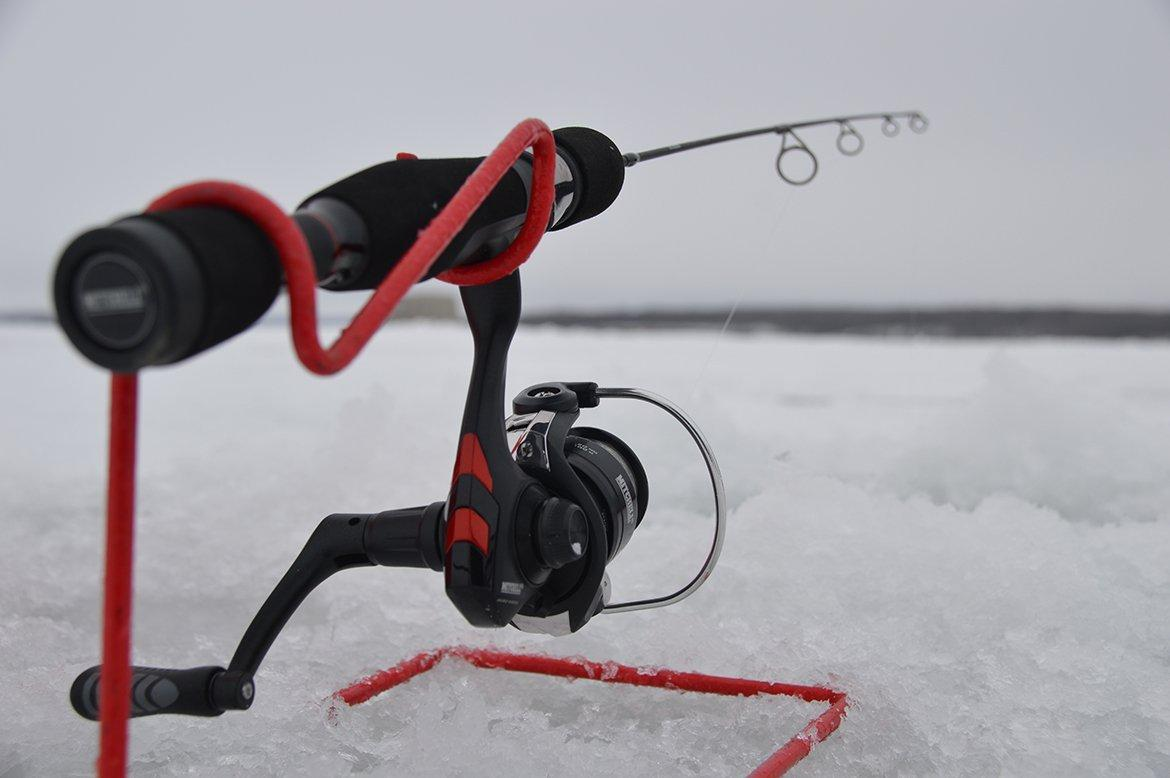
Ice fishing is a specialized form of fishing that involves drilling a hole through the ice and dropping your line in to catch fish below. It requires patience, skill, and, most importantly, a solid understanding of safety protocols.
Whether you’re a seasoned ice angler or a beginner, prioritizing safety is paramount to ensure an enjoyable experience on the frozen water. Let’s explore the importance of safety in ice fishing.
The Importance of Safety in Ice Fishing
Ice fishing is a beloved winter pastime for many outdoor enthusiasts, but it’s essential to prioritize ice fishing safety to ensure a successful and incident-free outing. Here are the top 6 reasons why safety in ice fishing should never be overlooked:
- Preventing Accidents: Ice fishing safety tips are crucial for preventing accidents on the frozen water body. Understanding ice conditions and recognizing potential hazards such as cracking ice or thin ice can help anglers avoid dangerous situations.
- Protecting Lives: Safety measures like wearing a life jacket or flotation suit can be lifesaving in the event of an ice or water emergency. These ice fishing safety equipment provide buoyancy and insulation, allowing anglers to stay afloat and maintain body heat while waiting for rescue.
- Avoiding Hypothermia: Cold weather and freezing water pose significant risks of hypothermia for winter anglers. Proper winter clothing and flotation snowmobile suits help retain body heat, while waterproof boots prevent exposure to icy water, reducing the risk of hypothermia.
- Ensuring Ice Thickness: Understanding ice thickness guidelines and using ice augers or ice picks to measure ice thickness is essential for ensuring safe ice fishing. Solid ice is the safest ice for fishing, with a recommended thickness of at least four inches for walking and foot-thick for small pickups or ATVs.
- Emergency Preparedness: Carrying safety equipment such as a cell phone, throw rope, and emergency flotation device is crucial for ice fishing emergencies. These tools enable anglers to call for help and assist in rescuing themselves or others from icy waters.
- Peace of Mind: Following ice fishing safety guidelines and being prepared for emergencies provides peace of mind for winter anglers. By taking proactive measures to mitigate risks, anglers can focus on enjoying their fun outdoor activity without worry.
Prioritizing safety in ice fishing is paramount for preventing accidents, protecting lives, and ensuring an enjoyable experience on the ice.
By following fishing safety protocols and being prepared for emergencies, anglers can enjoy their time on the frozen water body with confidence and peace of mind.
Preparing for Your Ice Fishing Trip
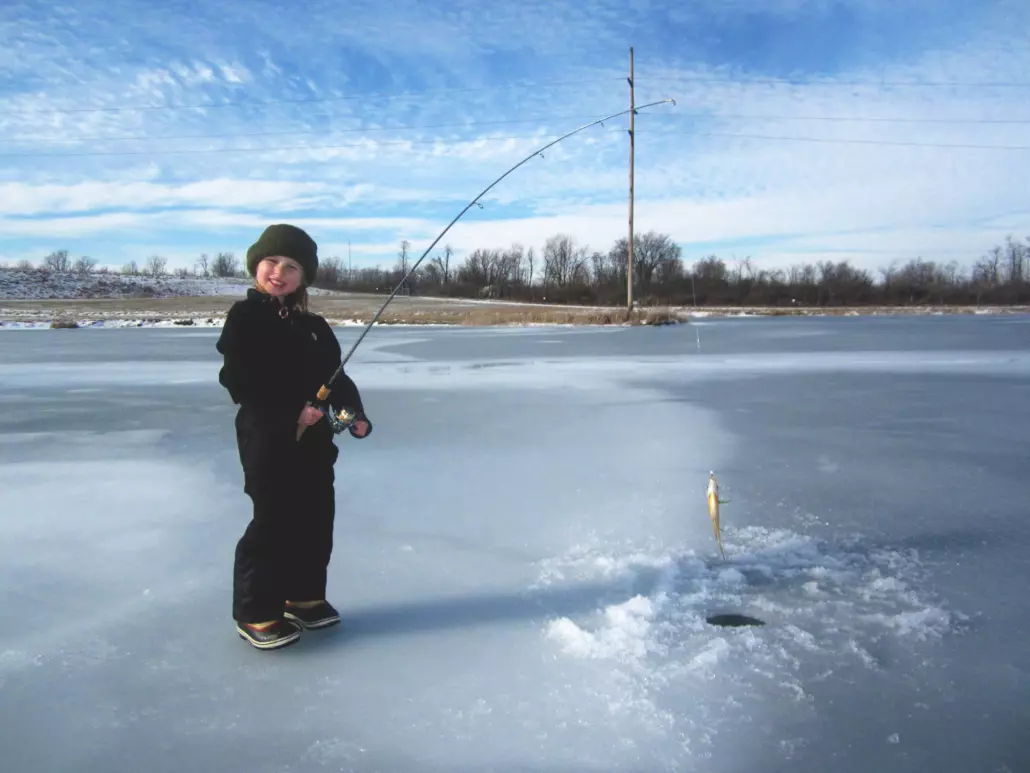
Getting ready for your ice fishing adventure involves getting everything in order to make sure you’re safe and have a great time out on the frozen water. Before you head out, make sure you’ve got the right gear with you.
This means things like ice picks to check how thick the ice is and life jackets or flotation snowmobile suits just in case something goes wrong. You should also check out the ice to see if it’s safe.
Look for strong, clear ice, and watch out for any signs that it might not be safe, like cracks or thin spots.
It’s cold out there, so dress warmly with your winter clothes and make sure your boots are waterproof to keep your feet dry. Bring your cell phone with you in case you need help, and have a rope handy to help someone if they fall in. Keep an eye out for any noises like cracking ice, which could mean the ice is shifting.
When you’re walking on the ice, try to spread your weight out evenly, and stay away from places where the water is moving or the ice might be weaker. And remember, it’s important to stay calm if something unexpected happens, like falling through the ice.
By being prepared and following these simple ice fishing safety tips, you can have a fun and safe time out on the ice, catching fish and enjoying the winter weather.
Essential Ice Fishing Safety Tips
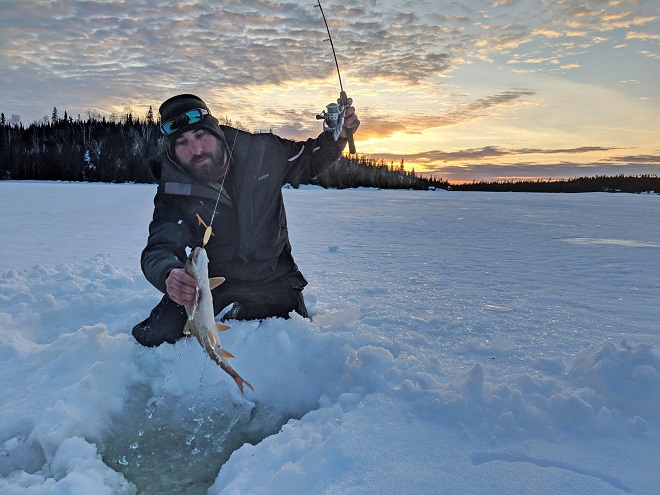
Now that you understand the importance of ice fishing safety, let’s dive into some essential tips and best practices to keep you safe while out on the frozen water.
Ice fishing is a thrilling winter activity that allows you to enjoy the serene beauty of frozen lakes and catch some fish. However, it is crucial to prioritize safety to ensure a successful and incident-free outing.
Appropriate Dressing for Ice Fishing
Dressing for the harsh winter conditions is key when venturing out onto the frozen lake. Layering your clothing is essential to trap heat and provide insulation. Start with a moisture-wicking base layer to keep your body dry and prevent hypothermia.
Over that, wear a warm and insulating mid-layer, such as a fleece or down jacket. Finally, top it off with a waterproof and windproof outer layer to shield yourself from the elements.
Don’t forget to protect your extremities from cold-related injuries. Wear thick woolen socks and insulated waterproof boots to keep your feet warm and dry. Invest in high-quality gloves or mittens that offer both warmth and dexterity.
Additionally, wear a hat or beanie to cover your head and a scarf or neck gaiter to protect your face from frostbite.
Checking Ice Thickness and Stability
One of the most critical aspects of ice fishing safety is verifying the thickness and stability of the ice. Always remember the golden rule: “No ice is safe ice.” Even if the ice appears thick, it may have weak spots that can be dangerous.
Before heading out onto the frozen lake, equip yourself with the necessary tools to assess ice thickness. Ice chisels and augers are invaluable for this purpose.
Use an ice chisel to make test holes at regular intervals as you venture farther out. Measure the ice thickness using a tape measure or a specialized ice thickness gauge.
Remember that a minimum ice thickness of four inches is generally considered safe for walking, while a minimum of five to seven inches is required for snowmobiles or ATVs.
Keep in mind that ice stability can vary due to factors like temperature, snow cover, and currents. Newly formed ice is typically stronger than old ice, which may have undergone multiple freeze-thaw cycles.
Be cautious when encountering areas with cracks, pressure ridges, or open water, as these indicate weaker ice.
Safety Equipment for Ice Fishing
Having the right safety equipment on hand is essential in case of emergencies. While we hope you never have to use them, these items can make a significant difference in ensuring your well-being.
Always carry a pair of ice picks or ice claws, which can help you pull yourself out of the water if you fall through the ice. These handheld tools have sharp spikes that you can use to grip the ice and pull yourself to safety. Attach them to a cord and wear them around your neck or keep them easily accessible in a pocket.
Flotation devices are another crucial piece of safety equipment. Inflatable life jackets or float suits can provide buoyancy and keep you afloat if you fall through the ice. Make sure to choose a flotation device specifically designed for ice fishing, as it will have features like insulation and built-in ice picks.
Lastly, a well-stocked first aid kit is a must-have. Accidents can happen, and being prepared with essential medical supplies can make a significant difference in an emergency. Include items like bandages, antiseptic ointment, pain relievers, and any necessary medications.
By following these essential ice fishing safety tips and being prepared with the right equipment, you can enjoy your ice fishing adventures with peace of mind. Remember, safety should always be your top priority to ensure a fun and incident-free experience on the frozen water.
Preparing Your Ice Fishing Gear
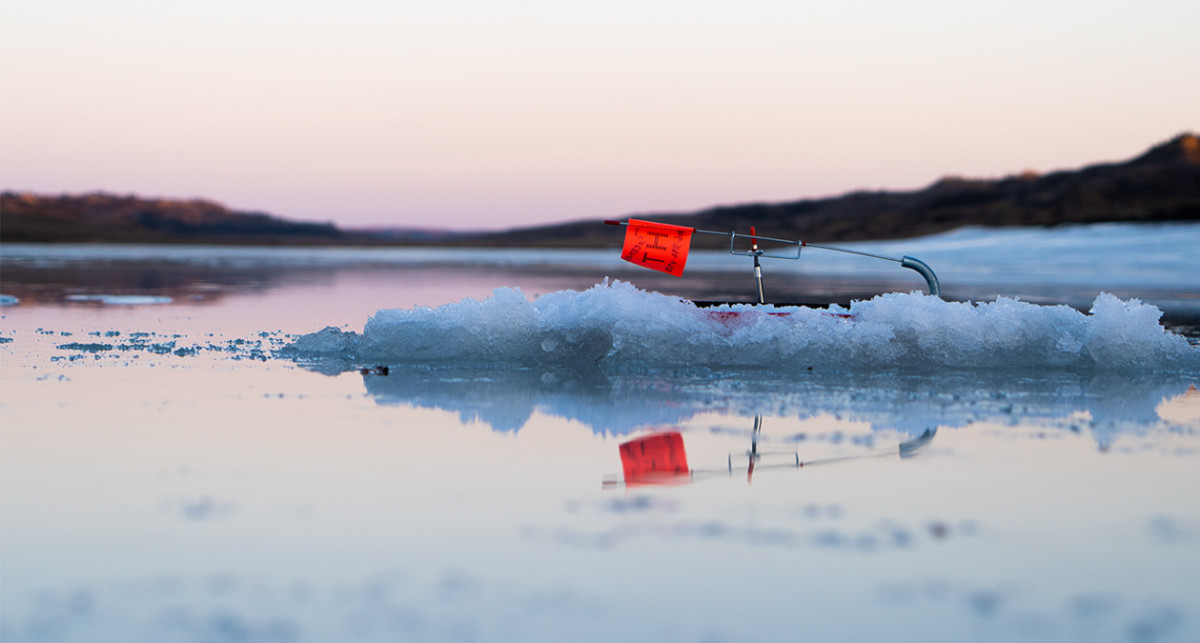
Aside from safety considerations, preparing your fishing gear properly can enhance your chances of a successful outing. From selecting the right fishing rods and tackle to choosing between manual and electric ice augers, let’s dive into the world of ice fishing equipment.
When it comes to ice fishing, having the right gear can make all the difference. The cold temperatures and icy conditions require specialized equipment that can withstand the elements and help you reel in that big catch.
Selecting the Right Fishing Rods and Tackle
Choosing the appropriate fishing rods and tackle for ice fishing is essential for a productive and enjoyable experience. Rods specially designed for ice fishing are shorter and sturdier, allowing for better control and maneuverability.
These rods are typically made of materials that can withstand freezing temperatures without compromising their performance.
When it comes to tackle, it’s important to consider the type of fish you’re targeting. Different species require different bait and lures, so make sure to do your research and stock up on the right gear.
From jigs and spoons to tip-ups and ice flies, there’s a wide variety of tackle options available for ice fishing.
Ice Augers: Manual vs Electric
Drilling holes through the ice is an integral part of ice fishing. There are two main types of ice augers: manual and electric. Manual augers are lightweight and require physical effort, while electric augers are more powerful and motor-driven. Consider your personal preferences and fishing needs when selecting an ice auger.
Manual augers are a popular choice among ice fishing enthusiasts who enjoy the physical challenge and simplicity of using hand tools. They are compact, easy to transport, and don’t require any external power source.
On the other hand, electric augers are favored by those who prioritize convenience and efficiency. With a push of a button, you can effortlessly drill multiple holes in a short amount of time.
Responsible Ice Fishing Practices
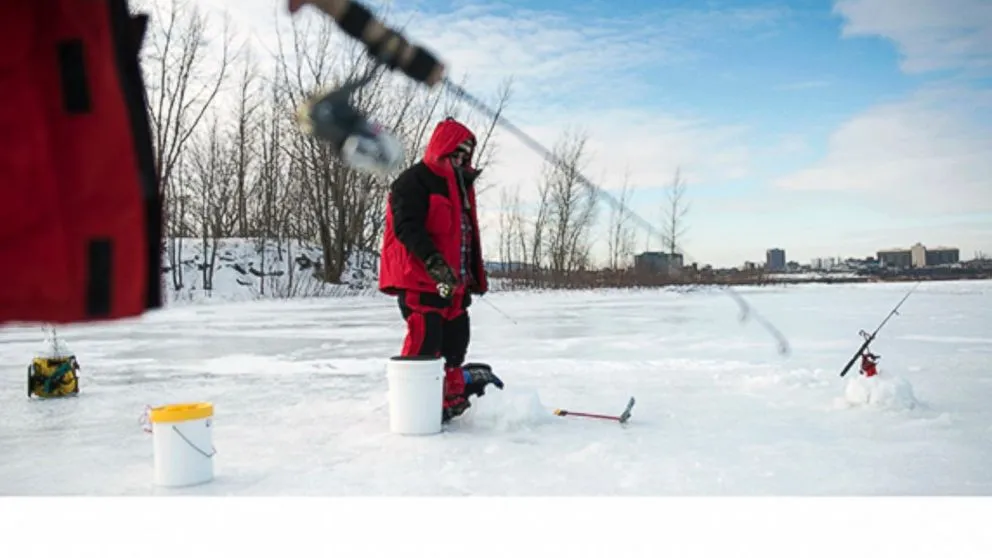
As avid outdoor enthusiasts, it’s our responsibility to respect the environment and wildlife while enjoying our favorite activities.
Respect for Wildlife and the Environment
Ice fishing provides us with a unique opportunity to appreciate and interact with nature. It’s crucial to maintain a respectful distance from wildlife and follow ethical fishing practices such as catch-and-release to preserve fish populations for future generations.
Leaving No Trace: Clean-up After Fishing
Lastly, leave the ice as you found it. Properly dispose of any trash and avoid leaving behind any signs of your presence. Keeping our natural surroundings clean ensures a positive impact on the ecosystem and allows others to enjoy the beauty of ice fishing.
Before you set off on your ice fishing adventure, remember that safety is paramount. Understanding the basics, preparing your gear, and following established safety guidelines will help ensure a memorable and incident-free experience.
So, bundle up, grab your gear, and enjoy the wonder and serenity of ice fishing while staying safe and well-prepared!

